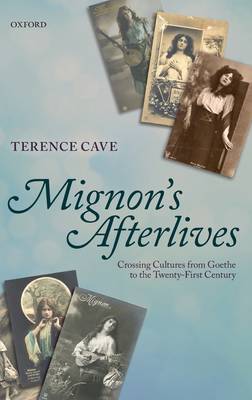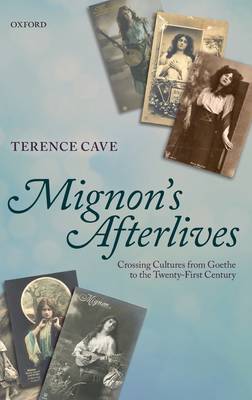
- Retrait gratuit dans votre magasin Club
- 7.000.000 titres dans notre catalogue
- Payer en toute sécurité
- Toujours un magasin près de chez vous
- Retrait gratuit dans votre magasin Club
- 7.000.0000 titres dans notre catalogue
- Payer en toute sécurité
- Toujours un magasin près de chez vous
Mignon's Afterlives
Crossing Cultures from Goethe to the Twenty-First Century
Terence Cave
Livre relié | Anglais
217,95 €
+ 435 points
Description
By tracing the afterlives of Mignon, an apparently minor character in Goethe's novel Wilhelm Meisters Lehrjahre, Terence Cave explores a phenomenal success story in the history of literature and music, and more broadly of cultural history. Mignon steps out of the shadow of its protagonist Wilhelm and fashions a destiny of her own: she becomes the object of an obsessive interest that reached its peak in the later nineteenth century but continues to reverberate into the twenty-first century. Mignon reappears - often as a character bearing a different name but sharing an unmistakable family resemblance with her - in a wide range of different literary works from Goethe himself via the German Romantic Novel, Mme de Stael, George Sand, Nerval and Baudelaire, Walter Scott and George Eliot to Gerhart Hauptmann and Angela Carter. Her songs, set by dozens of composers from Reichardt and Beethoven to Wolf, reverberated through the drawing-rooms and concert-halls of nineteenth-century Europe. She is the heroine of the most popular French opera of the late nineteenth century, and she has featured in a number of films. She is fascinating because she is poised on the threshold between childhood and adolescence, aphasia and expressive power, words and music; she is a wanderer who has lost her home, an exile who has been abducted and abused; and the many stories in which her life is reenacted provide a litmus test for key cultural values of the nineteenth and twentieth centuries.
Spécifications
Parties prenantes
- Auteur(s) :
- Editeur:
Contenu
- Nombre de pages :
- 328
- Langue:
- Anglais
Caractéristiques
- EAN:
- 9780199604807
- Date de parution :
- 01-11-11
- Format:
- Livre relié
- Format numérique:
- Genaaid
- Dimensions :
- 160 mm x 236 mm
- Poids :
- 657 g

Les avis
Nous publions uniquement les avis qui respectent les conditions requises. Consultez nos conditions pour les avis.






